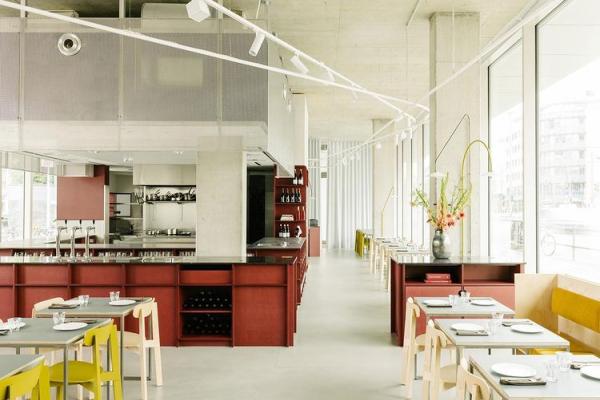Modern european cuisine
Outlands
Fri, 27 Apr 2018 18:00-21:00at BBA Gallery
Outlands
Three artists contemplate land as both a place of possession, exploitation and destruction and a place of fiction, longing and escape.
Their landscapes are topographical representations, creations and distortions of surfaces that tackle issues of mapping, exploration and colonisation as well as the human quest for resources and uncharted grounds in terms of both substance and psychology. The mediums reach from a chemical-based painting technique to meticulously executed watercolour paintings using interference pigments and computer-based experimental 3D-illustrations that are later transferred by hand onto paper via screen-printing. ‘Outlands’ tells visual stories about mutilation and intactness of wilderness and raises questions about the land as we use it upon and beyond planet earth.
Kristian Askelund’s works are influenced by aerial images of large-scale surface mining of oil sands. Open surface mining of oil sands is a testament to the destructive nature of our dependency on fossil fuel, which at the end of a long cycle of intermediate steps contributes to the warming of the planet. With the recent denial of climate change on the rise, it seems even more urgent to highlight these mining actions and the impact of fossil fuel on our life at large.
The works resemble satellite imagery of surfaces depicting topographical features as crates, rivers and mountains. Their intrinsic energy derives from their macroscopic viewpoint which leads the eye to refocus between details and the whole. The intricacy of the subject matter is mirrored in the work’s technique. Types of metal are treated with various acids in different levels of strength, as well as other chemicals, to undergo an accelerated process of oxidation. Some canvases are even stored outside of the studio to get exposed to the elements.
Olivia Lennon’s works circle around the topics of navigation, topography, mapping and the search for resources in space. Painted in gold and ultramarine blue, two colours that have historically signified value and have been controlled by cartels, the series ‘Trillion$ await’ tackles the future possibility of asteroid mining. Will our search for resources follow destructive historical precedent? And could it establish a modern land run in outer space causing another space race? The minimalist installation ‘Ultracaelum’ consists of a needle that points into the unknown and hints at human kind navigating towards something that might not (yet) exist.
Lennon’s works present different facets of observation or speculation around the working of time, telemetry, space and matter. Her work is as much poetic as scientifically informed and thereby reflects the constant process of de- and reconstruction that takes place in ordered and chaotic views of the cosmos. Lennon’s watercolour images are carefully painted by hand with fine sable brushes using vinyl paint and interference watercolour pigments. These pigments contain no colour in the usual sense as they are grains of the translucent mineral mica thinly electroplated in different thicknesses of titanium white. The thickness of the titanium determines the angle of refraction of light above the paint, creating the optical illusion of colour.
Susanne Piotter creates fictional landscapes based on her experimental digital 3D layouts, which she then transfers onto screens and colour-prints by hand. As a starting point for her works she uses inspirations that derive from futuristic scenarios in film and literature as well as her own experiences of elements and weather phenomenons. Even though her motifs consist solely of shapes and reduced color-schemes, they transport a strong sense of texture, material and atmosphere. We see rocks, treelines, mountains, snow, mist and explosions. The wilderness in Piotter’s works is total and devastating. And although created digitally and executed carefully and clean, the works seem to promote a more primitive and relentless nature than humans might be ready to endure.
Piotter’s sculptures called ‘artifacts’ are small works of concrete relating to architecture, that derive from an intuitive, playful process and refer to places in which urban concepts, technologies and achievements intermingle and compete. The ‘artifacts’ are reminiscent of building shells and architectural failures, they have no function, but are autonomous objects. As part of ‘Outlands’, the sculptures will be presented within an topographical environment, that presents them as either future or long lost habitats, as buildings within an undiscovered or long forgotten scenery, whose purpose has yet to be figured out.
The artists will be present at the opening.

